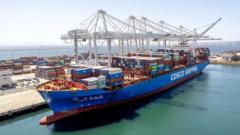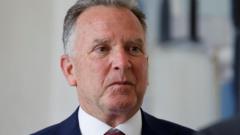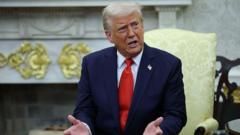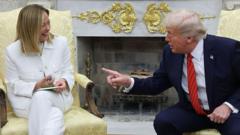As trade dynamics shift, uncertain paths emerge for both US and EU economies.
### EU to Reconsider Tariffs After Trump’s Sudden Policy Shift

### EU to Reconsider Tariffs After Trump’s Sudden Policy Shift
European Union officials are re-evaluating their response to tariffs following President Trump's unexpected pause.
In a surprising turn of events on Wednesday, April 9, 2025, President Trump announced a temporary halt to certain tariffs that had been set against European imports, just as the European Union (EU) was ready to implement its own retaliatory tariffs on American goods. This move has been interpreted by European leaders as a potential signal for renewed negotiations on trade relationships between the two economic giants.
As per EU sources, officials had previously authorized retaliatory tariffs ranging from 10 to 25 percent on about $23 billion worth of American imports. These levies were slated to target various sectors, with a heavy focus on metals, primarily in response to Trump’s earlier imposition of tariffs on steel and aluminum.
Trump's announcement suggests that while reciprocal tariffs introduced on April 2 may be paused, the previous 25 percent duties on key sectors like automotive and metals will remain intact. This creates a complex backdrop, as the EU now finds itself in a position of reassessment concerning whether to proceed with its retaliatory measures.
European Commission spokesperson Olof Gill emphasized the importance of thorough evaluation of this new development, stating that the EU leaders would carefully consult with member states and industrial stakeholders before determining any next steps.
In the immediate aftermath of Trump’s policy shift, financial markets reacted positively, indicating relief that a potential full-scale trade war might be avoided. However, the details of the long-term implications remain unclear, leaving both sides to navigate the evolving landscape of international trade.
As the EU reflects on its strategy, the future of transatlantic trade relations hangs in the balance, prompting discussions that may redefine economic interactions between the United States and Europe moving forward.






















